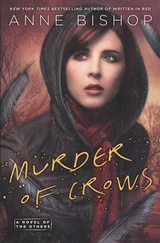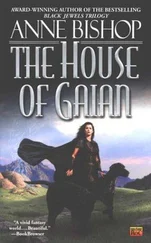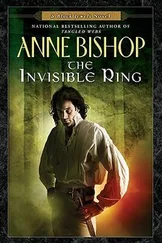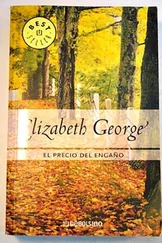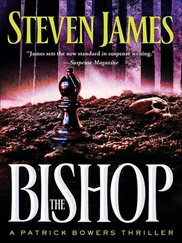One evening, Mary came to call on me and we sat on an old table in the back yard to watch the sunset.
“Papa came today,” she said, “and we’ve got to go back day after tomorrow.”
“Is Mrs. Sennett going to stay here?”
“She said at supper she was. She said this time she really was, because she’d said that last year and came back, but now she means it.”
I said, “Oh dear,” scarcely knowing which side I was on.
“It was awful at supper. I cried and cried.”
“Did Theresa cry?”
“Oh, we all cried. Papa cried, too. We always do.”
“But don’t you think Mrs. Sennett needs a rest?”
“Yes, but I think she’ll come, though. Papa told her he’d cry every single night at supper if she didn’t, and then we all did. ”
The next day I heard from Xavier that Mrs. Sennett was going back with them just to “help settle.” She came over the following morning to say goodbye, supported by all five children. She was wearing her travelling hat of black satin and black straw, with sequins. High and sombre, above her ravaged face, it had quite a Spanish-grandee air.
“This isn’t really goodbye,” she said. “I’ll be back as soon as I get these bad, noisy children off my hands.”
But the children hung onto her skirt and tugged at her sleeves, shaking their heads frantically, silently saying “No! No! No!” to her with their puckered-up mouths.
1948
My aunt Mary was eighteen years old and away in “the States,” in Boston, training to be a nurse. In the bottom bureau drawer in her room, well wrapped in soft pink tissue paper, lay her best doll. That winter, I had been sick with bronchitis for a long time, and my grandmother finally produced it for me to play with, to my amazement and delight, because I had never even known of its existence before. It was a girl doll, but my grandmother had forgotten her name.
She had a large wardrobe, which my Aunt Mary had made, packed in a toy steamer trunk of green tin embossed with all the proper boards, locks, and nailheads. The clothes were wonderful garments, beautifully sewn, looking old-fashioned even to me. There were long drawers trimmed with tiny lace, and a corset cover, and a corset with little bones. These were exciting, but best of all was the skating costume. There was a red velvet coat, and a turban and muff of some sort of moth-eaten brown fur, and, to make it almost unbearably thrilling, there was a pair of laced white glacé-kid boots, which had scalloped tops and a pair of too small, dull-edged, but very shiny skates loosely attached to their soles by my Aunt Mary with stitches of coarse white thread.
The looseness of the skates didn’t bother me. It went very well with the doll’s personality, which in turn was well suited to the role of companion to an invalid. She had lain in her drawer so long that the elastic in her joints had become weakened; when you held her up, her head fell gently to one side, and her outstretched hand would rest on yours for a moment and then slip wearily off. She made the family of dolls I usually played with seem rugged and childish: the Campbell Kid doll, with a childlike scar on her forehead where she had fallen against the fender; the two crudely felt-dressed Indians, Hiawatha and Nokomis; and the stocky “baby doll,” always holding out his arms to be picked up.
My grandmother was very nice to me when I was sick. During this same illness, she had already given me her button basket to play with, and her scrap bag, and the crazy quilt was put over my bed in the afternoons. The button basket was large and squashed and must have weighed ten pounds, filled with everything from the metal snaps for men’s overalls to a set of large cut-steel buttons with deer heads with green glass eyes on them. The scrap bag was interesting because in it I could find pieces of my grandmother’s house dresses that she was wearing right then, and pieces of my grandfather’s Sunday shirts. But the crazy quilt was the best entertainment. My grandmother had made it long before, when such quilts had been a fad in the little Nova Scotian village where we lived. She had collected small, irregularly shaped pieces of silk or velvet of all colors and got all her lady and gentleman friends to write their names on them in pencil — their names, and sometimes a date or word or two as well. Then she had gone over the writing in chain stitch with silks of different colors, and then put the whole thing together on maroon flannel, with feather-stitching joining the pieces. I could read well enough to make out the names of people I knew, and then my grandmother would sometimes tell me that that particular piece of silk came from Mrs. So-and-So’s “going-away” dress, forty years ago, or that that was from a necktie of one of her brothers, since dead and buried in London, or that that was from India, brought back by another brother, who was a missionary.
When it grew dark — and this, of course, was very early — she would take me out of bed, wrap me in a blanket, and, holding me on her knees, rock me vigorously in the rocking chair. I think she enjoyed this exercise as much as I did, because she would sing me hymns, in her rather affectedly lugubrious voice, which suddenly thinned out to half its ordinary volume on the higher notes. She sang me “There is a green hill far away,” “Will there be any stars in my crown?” and “In the sweet bye-and-bye.” Then there were more specifically children’s hymns, such as:
Little children, little children,
Who love their Redeemer,
Are the jewels, precious jewels,
Bright gems for his crown.…
And then, perhaps because we were Baptists — nice watery ones — all the saints casting down their crowns (in what kind of a tantrum?) “around the glassy sea;” “Shall we gather at the river?;” and her favorite, “Happy day, happy day, when Jesus washed my sins away.”
* * *
This is preliminary. The story of Gwendolyn did not begin until the following summer, when I was in my usual summer state of good health and had forgotten about the bronchitis, the realistic cat-and-kitten family in my chest, and the doctor’s cold stethoscope.
Gwendolyn Appletree was the youngest child and only daughter of a large, widely spaced family that lived away out, four or five miles, on a lonely farm among the fir trees. She was a year or so older than I — that is, about eight — and her five or six brothers, I suppose in their teens, seemed like grown men to me. But Gwendolyn and I, although we didn’t see each other very often, were friends, and to me she stood for everything that the slightly repellent but fascinating words “little girl” should mean. In the first place, her beautiful name. Its dactyl trisyllables could have gone on forever as far as I was concerned. And then, although older, she was as small as I was, and blond, and pink and white, exactly like a blossoming apple tree. And she was “delicate,” which, in spite of the bronchitis, I was not. She had diabetes. I had been told this much and had some vague idea that it was because of “too much sugar,” and that in itself made Gwendolyn even more attractive, as if she would prove to be solid candy if you bit her, and her pure-tinted complexion would taste exactly like the icing-sugar Easter eggs or birthday-candle holders, held to be inedible, except that I knew better.
I don’t know what the treatment for diabetes was at that time — whether, for example, Gwendolyn was given insulin or not, but I rather think not. My grandparents, however, often spoke disapprovingly of the way her parents would not obey the doctor’s orders and gave her whatever she wanted to eat, including two pieces of cake for tea, and of how, if they weren’t more sensible, they would never keep her. Every once in a while, she would have a mysterious attack of some sort, “convulsions” or a “coma,” but a day or two later I would see her driving with her father to the store right next door to our house, looking the same as ever and waving to me. Occasionally, she would be brought to spend the day or afternoon with me while her parents drove down the shore to visit relatives.
Читать дальше

